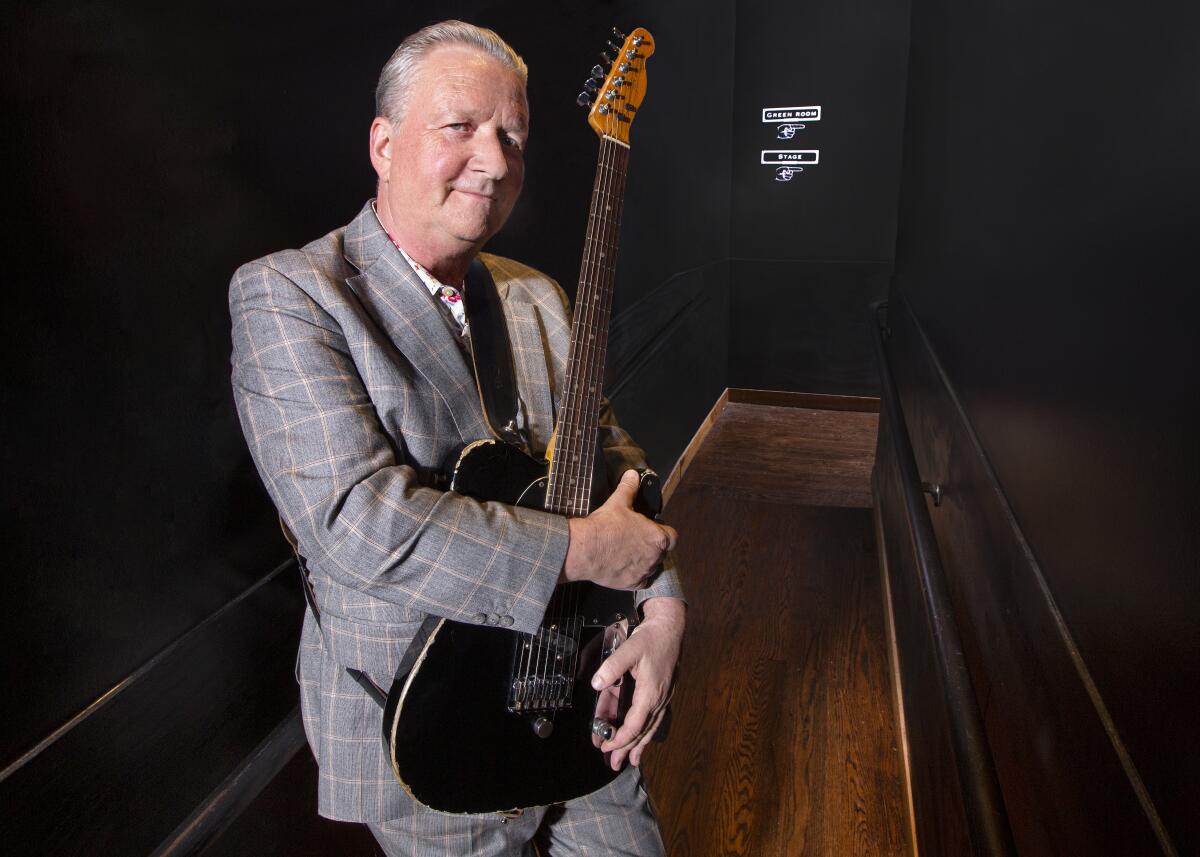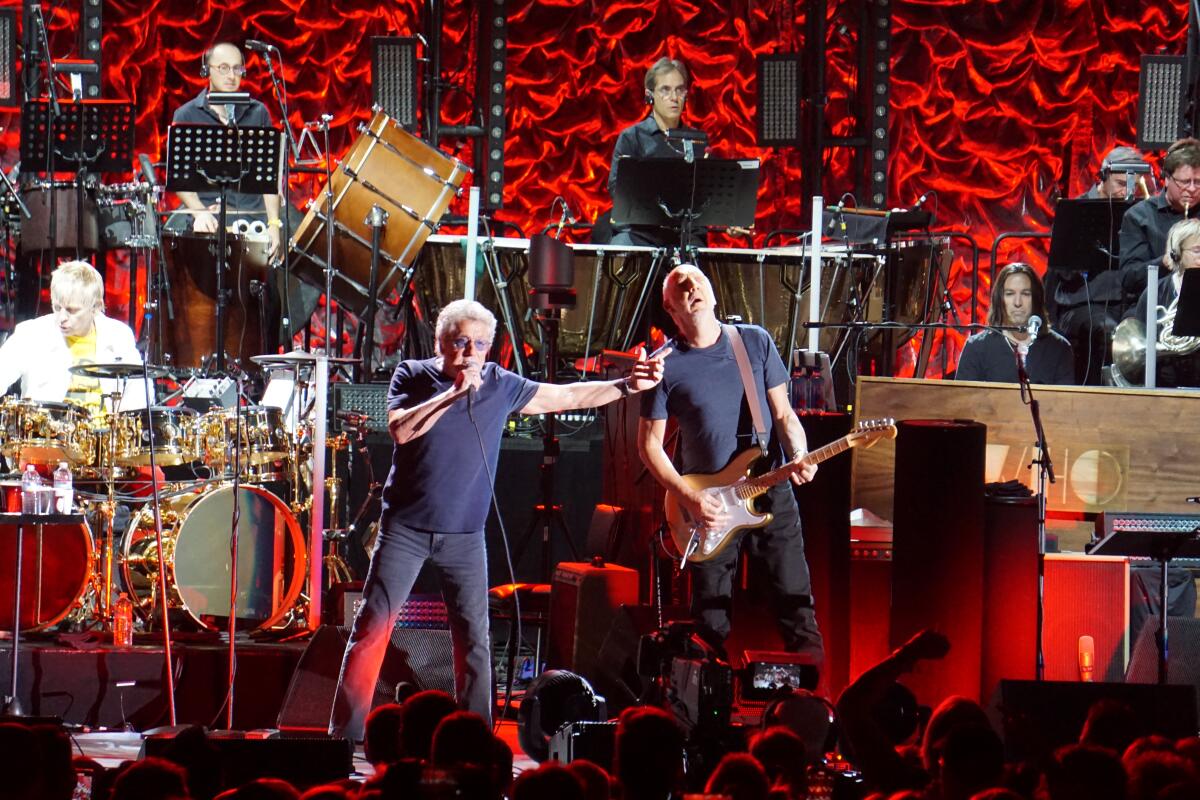Midway through a recent Bonnie Raitt concert, a woman shouted “Play ‘Angel From Montgomery.’” The song, a John Prine cover, was an album track for Raitt 50 years ago that became what she calls “so beloved.”
Peering into the crowd Raitt slyly said, “Well, if I was a betting woman…” earning raucous cheers. While she’s not wedded to playing the hits — Raitt left out two of her biggest singles, “Love Sneakin’ Up On You” or “Not the Only One” — she cannot imagine a show without “Angel.”
“I’m lucky enough to have songs that people will be mad if they don’t hear; that’s not a drag, it’s an honor,” Raitt says. “I’m still invested every time. ”
The phrase “set list” has a double meaning: it’s the lineup of songs, but for most artists the list is also fairly set; they may rotate a few songs in and out, but they generally stick to what they’ve rehearsed.
There are exceptions, and not just jam bands like the Allman Brothers Band or the Grateful Dead. “Bob Dylan doesn’t have a set list and I don’t think Bruce Hornsby has had one for 30 years,” says Raitt, who has five Southern California shows from Tuesday to Sept. 17, including the Pacific Amphitheatre in Costa Mesa on the 14th.

Raitt’s band is constantly switching instruments for different keys and tunings, so freewheeling like Dylan would be impossible. But she likes to keep the band fresh and will typically swap out a couple of songs — and sometimes she won’t tell the band until right before or even during the show. “I’ll have my guitar guy standing there with two instruments and I’ll point to the one I want.”
Last year, Elvis Costello did a 10-night stint in New York without repeating a song, playing more than 200 tracks. Squeeze’s Glenn Tilbrook admires that but hasn’t gone that far. “That’s a great thing, but we’re much slower to move around,” says Tilbrook, whose band recently played four Southern California shows.
Squeeze plays better when it’s the same songs every night. “We relax when we know what’s coming and how to deliver it, and because you’re comfortable the delivery starts getting better,” he says.
Still, he thinks about trying what Costello did, telling fans in advance they’re going to experiment with their sets. “But I don’t know how many people would like us to do that and while I’d love to broaden ourselves, at the moment we’re still trying to capture as many people as possible.”
Indeed, while plenty of die-hards go to shows hoping for deep cuts, most fans arrive hoping to hear the hits. (These days, of course, you can go to setlist.fm to see in advance what you’re likely to hear.) The artists must balance those competing needs, along with their own desires.
Raitt is impressed by her friends Jackson Browne and James Taylor, who frequently have to close with 45 minutes of nonstop classics. “But they’ll still disappoint people because there’s not enough time for all their hits,” she says. “So I don’t know how the Stones or Paul McCartney do it.”

Glenn Tilbrook of Squeeze
(Barry Brecheisen)
Tilbrook says that beyond the biggest hits it’s impossible to guess what everyone wants to hear. “You have to go with your instinct, though we haven’t always been right and we’ve played some songs in the past that were clunky and misguided,” he says.
Years ago I was discussing this with the Who’s Roger Daltrey who said opening every show with the Who’s first single, “I Can’t Explain,” was for the band, their own tradition and a nod to their deep history.
While they’re perpetually obligated to do “Baba O’Riley,” “Won’t Get Fooled Again” and “Pinball Wizard,” Daltrey always pushed for more obscure tracks. When I told him how my sons and I had been thrilled by the presence of “Slip Kid” and “A Quick One, While He’s Away” on that tour, he explained there were two obstacles to such additions: one was that guitarist Pete Townshend was always reluctant to go back and relearn his own oldies, and the other is that while a few thousand audience members like me leaped out of our seats, “everybody else just goes to the toilet.”
Raitt says she keeps her most played songs fresh “because I just naturally sing them a little differently and play the guitar solos a little differently every night,” she says. She’ll occasionally try a more conscious change like performing “Something to Talk About” with a ska beat on one tour. “We had fun doing it, but I couldn’t tell what the audience thought and you can’t interview them about whether they liked it or not,” she says. “I think you’ve got to keep those iconic songs pretty close to what people came to hear since they’re paying for the tour bus.”
Tilbrook says that thinking back to his father’s love of jazz, he is now “more playful vocally than I’ve ever been” on the band’s hits. He’s also bringing the wilder and more experimental guitar playing he reveled in on a recent solo tour to the band’s efforts. “I’ve never opened that door before and I really like it,” he says. In those solo shows he tinkered with their biggest hit, “Tempted,” and “it worked so well I said to the band let’s give this way a go.”
While Squeeze leans toward playing songs people know, it’s been diving deeper into the catalog for songs like “What Have They Done,” from the soundtrack of an animated 1980s British movie. But Tilbrook is pragmatic about his choices. One forgotten tune he wanted to revive this tour was “Rose I Said” but he ultimately rejected it.
“It’s an absolute mouthful to sing, with a lot of wordage,” he says. “We’re doing “Some Fantastic Place” instead. You have to do comparisons and say, ‘I need more space to sing so I don’t just keel over.’”
Tilbrook adds that since seeing Radiohead at Coachella about a decade ago and realizing they were filling in songs with pre-recorded material as a “flavor enhancer,” Squeeze has done that on about half the songs. “That makes a big difference in how wide your palette is to work from,” he says.

Roger Daltrey and guitarist Pete Townshend of the Who performing at the Hollywood Bowl.
(Cortesía Álex Mónico)
While Raitt chooses songs that interest herself and her band, she never forgets her audience, conscious of not playing too many consecutive songs without something familiar.
“I’m also cognizant of how many repeat concertgoers I have,” she says. “There are people that haven’t seen me in 20 years, but a lot saw me my last two times. You have to rotate enough songs so people don’t see me wearing the same shirt or playing the same song last time I came through town.”
Pacing and variety is crucial to a successful set. Daltrey won’t even sing two songs in the same key back to back. And while Squeeze now does more slower stuff than in the past, Tilbrook says it’s all part of an arc: “you increase tempo from song to song, then do it again and until you drop to something slow and start again,” he says. “Psychologically it works well and hopefully those bridges are interesting.”
Raitt also talks about “setting a pace and then ramping up,” noting that playing at an outdoor festival where everyone is standing in the sun requires an emphasis on livelier tunes. “I love playing for people seated in a theater because I can get quiet and contemplative and deeper emotionally for a longer period,” she says. “It feels like a sacred space and you can get that unity of vibe with the audience.”
Generally, she works in a few songs from her latest record that resonate with fans and sets aside an acoustic section for blues and folk songs — “but I won’t put that too early” — but she’s especially conscious of spacing out her ballads like “Angel” and “I Can’t Make You Love Me.”
“I don’t play too many sad songs in a row,” she explains. “It just bums people out, including me.”
That means some of her favorite ballads like “Going Wild for You Baby” and “The Bed I Made” don’t make the cut because they aren’t known enough to bump the big ones.
Raitt’s biggest single, “Something to Talk About,” is poppier than most of her set, but her fans love it “and it’s a palate cleanser, a bit of relief between the other songs. So it makes me happy to play a song that brings people joy.”
She also ends her show on a high, frequently a cover like B.B. King’s “Never Make Your Move Too Soon,” or Talking Heads’ “Burning Down the House.”
“I can’t play ‘Dimming of the Day’ and then say, ‘See you later,” she says. “I want to send people out with something up-tempo.”


